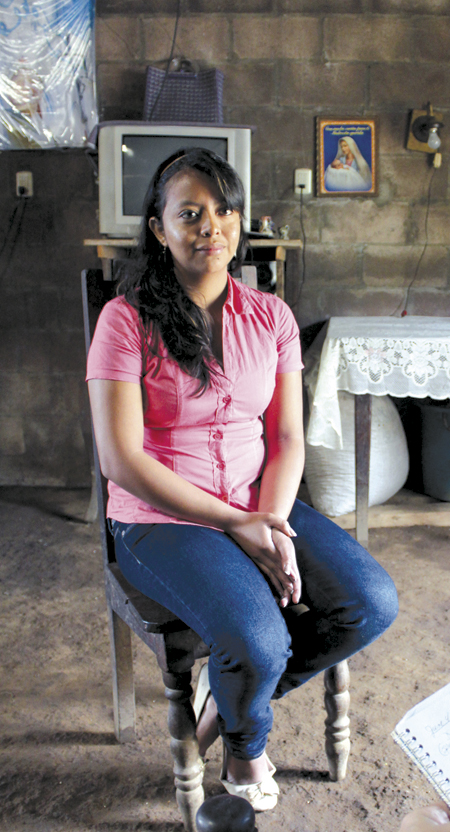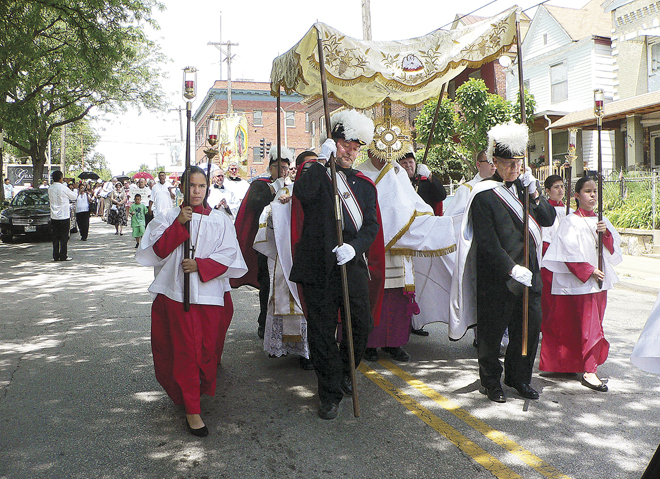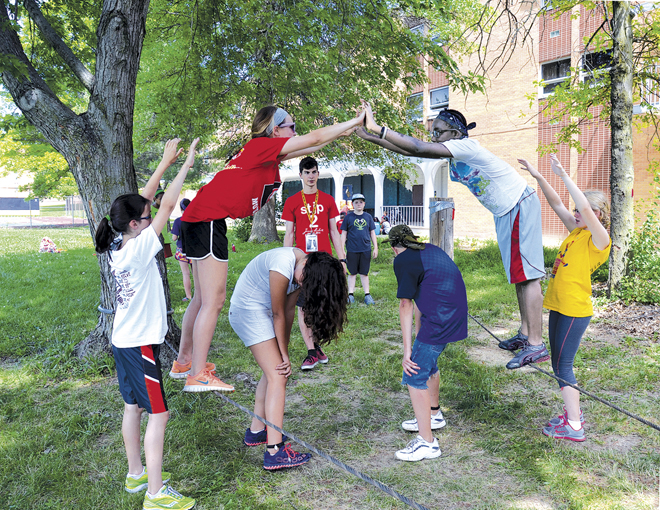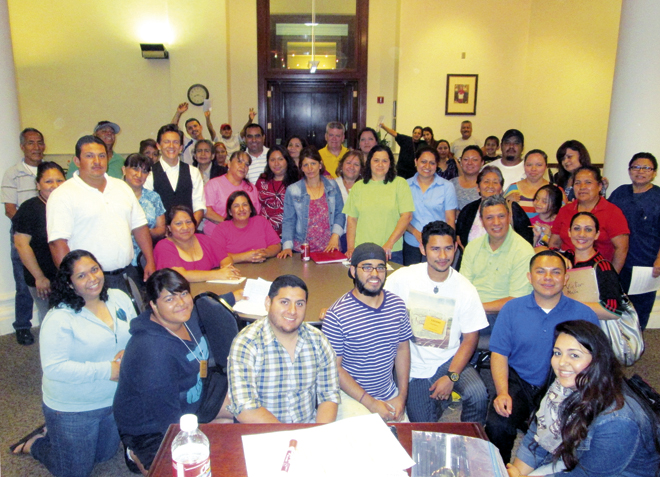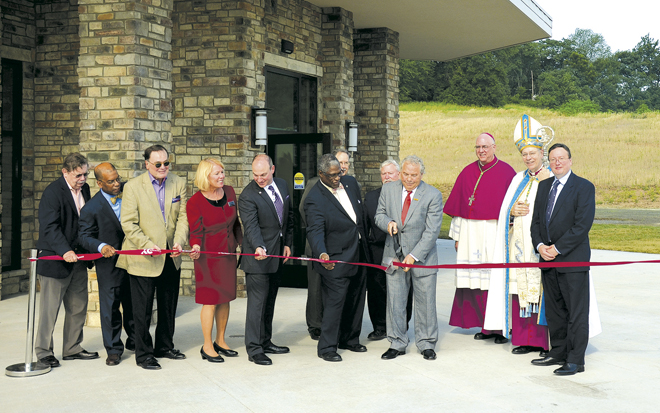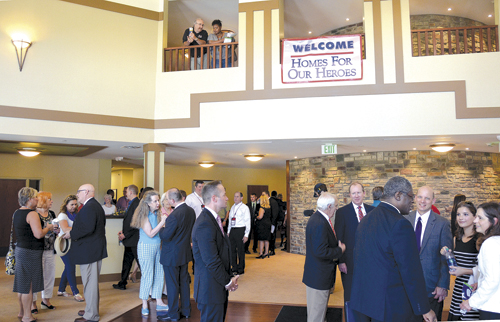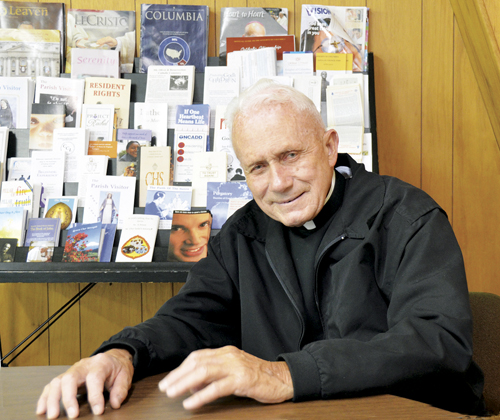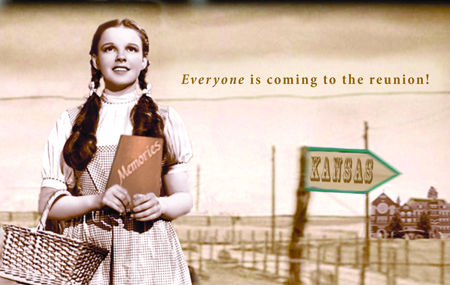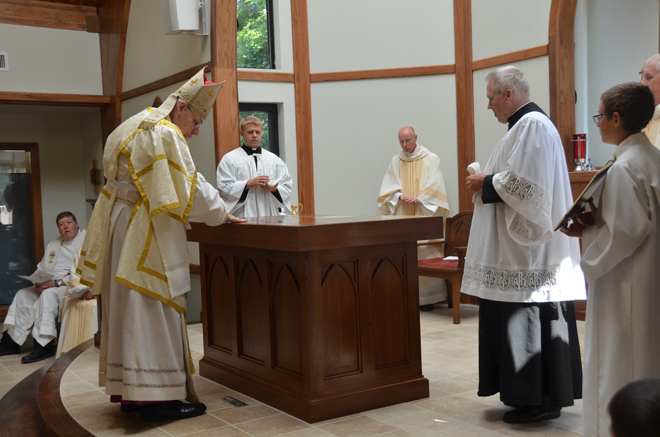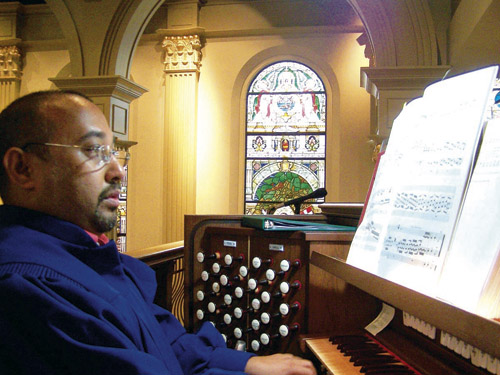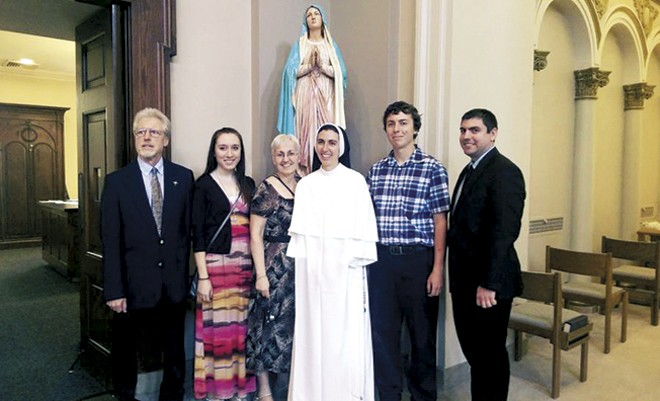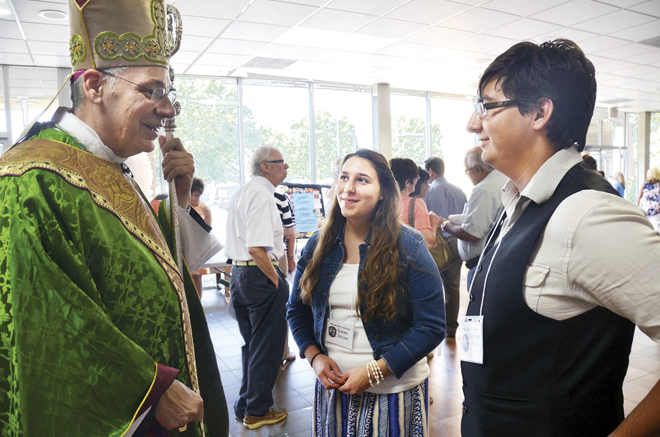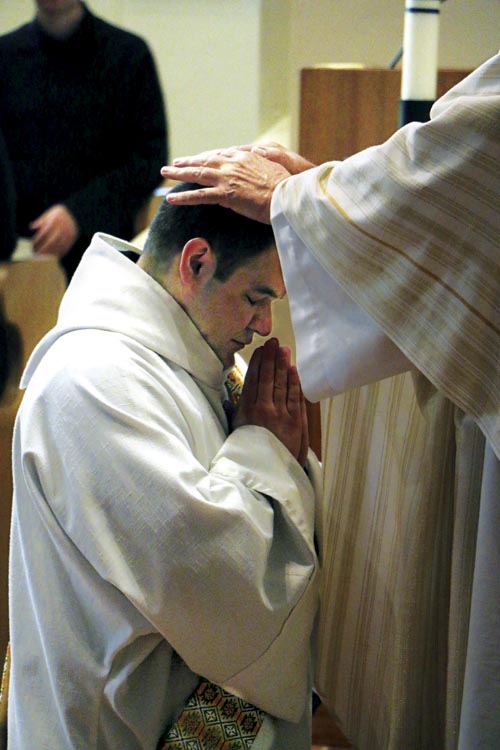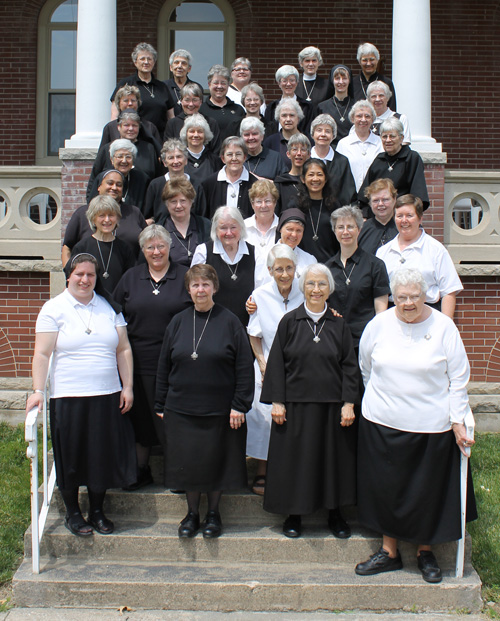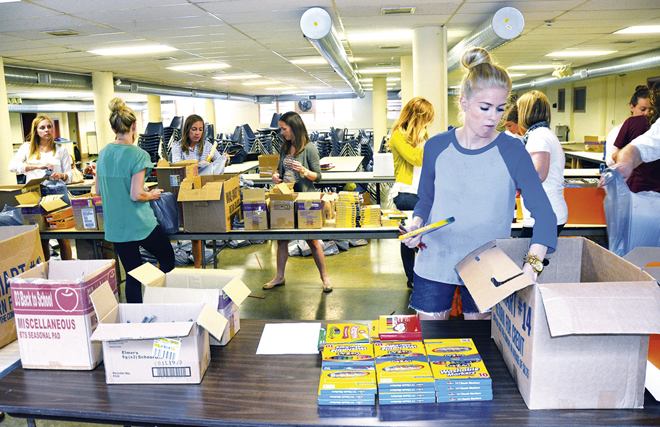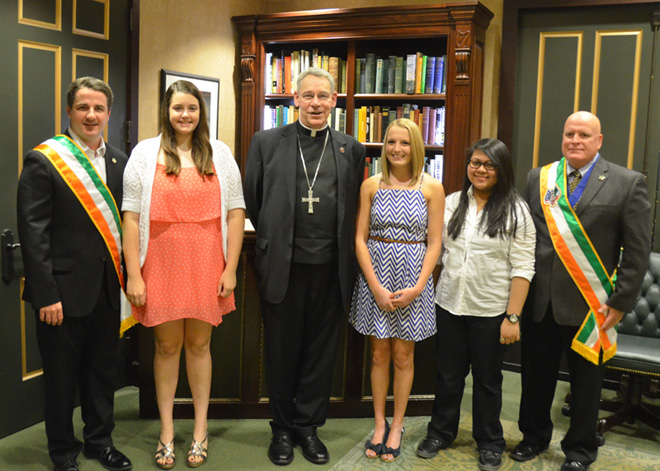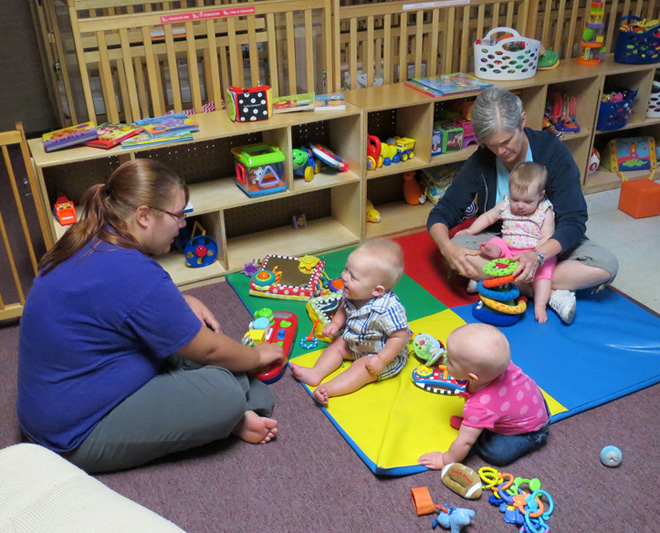
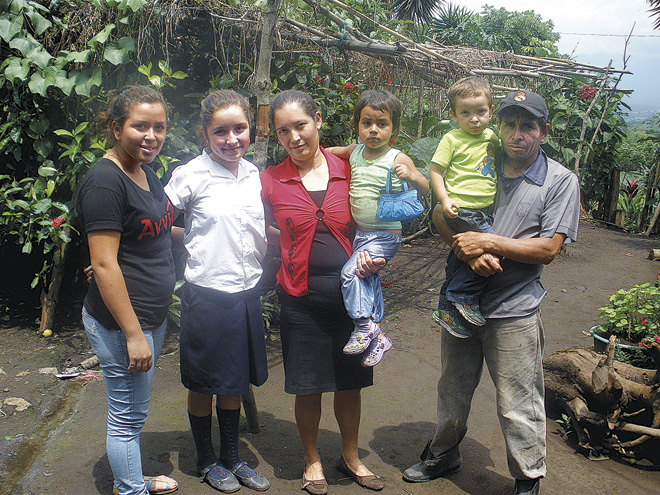
Marlena (holding a neighbor’s child) with daughters Elvira and Wendy, husband Julio and son Julio Cesar, stands near a garden planted near their front door. (Marty Denzer/Key photo)
By Marty Denzer
Catholic Key Reporter
EL SALVADOR — The mountainside village was surrounded by coffee plantations and sugar cane fields. Despite a lowering sky, with clouds so close you could almost touch them, a table was set out in the center of the village, displaying a big vase of flowers and fruits and vegetables, all home grown. A group of women stood near the table chatting, occasionally stooping to pick up a small child. Other children rode bikes or kicked a soccer ball around. A brood hen sat on a nest off to one side of the village center, clucking quietly to her chicks, a pony grazed contentedly in a patch of grass while dogs, cats and an occasional goat wandered by.
As we approached, applause and smiles greeted us. The two blondes in our group fascinated several children, who reached up to touch the light hair. Plastic chairs were hurriedly brought, we sat down and the Community Arenales Mothers Group meeting began.
The group, begun in 2009 as part of another mothers group before becoming independent in 2011, is comprised of 17 mothers with 24 sponsored children through Unbound. They meet regularly to discuss community challenges, successes and reports of the finance, education, nutrition and health and recreation committees. But first they wanted us to see and taste some of the fruits and vegetables grown in the community.
Olga told us, “We all work together. We share all the fruit and vegetables. We have roses. We’ll have corn and beans come harvest time. We also grow limes, paterna (a large pod of beans covered with a fluffy white, sweet coating like cotton candy), maranon or cashew fruit (the actual fruit surrounding the nut), mangoes and other fruits. We are surrounded by green. At this time of year, all is green.”
She added that some of the families in the community have small farms and raise chickens and some cows for milk and cheese.
A member of the finance committee, Olga has charge of record keeping: attendance, expenditures and deposits. Each mother deposits $2 every month in her bank account, saved from the children’s sponsorship contributions, fundraisers and raffles, and what they earn from a small business. Mothers also pay .50 monthly collaborative dues.
“Everything is written down,” Olga said. If a mother cannot write her name on the attendance sheet, her fingerprint is used.
The deposits build up a mother’s bank account and credit rating and help the members save for purchases like a new roof, an electric stove or plastic chairs. The deposits also help a mom apply for a loan through the Mothers Group to start or add to a small business and to make loan repayments. Some of the mothers are members of a co-op which also helps their small businesses, which includes handmade jewelry, clothing, or food sales.
Marlena, a member of the education committee, takes charge of keeping the minutes of every Mothers Group meeting and of every meeting with Unbound’s social workers. She checks the grades of every sponsored student quarterly to see if anyone needs help academically. If so, a group of scholarship students are available to tutor.
She also helps the children write letters to their sponsors and delivers them to the social workers who send them to the center in Santa Ana to be translated and forwarded to the U.S.
The health and nutrition committee members visit sponsored children to check on their overall health. They also assist visiting doctors on health campaigns, running tests and doing lab work.
Julia, on the recreation committee, works to provide dancing and music in the community, as well as other activities.
“We are all here to care for each other,” Olga said.
Marlena (32) and her husband Julio (43) have three children, Elvira (16), Wendy (12) who is sponsored, and Julio Cesar (2). With smiles the couple told of their meeting and courtship, saying “We started to talk and since we started talking, everything has been beautiful!” The family lives in the house where Julio grew up.
Every morning Julio heads for the fields to cultivate the growing corn and beans, some of which he will sell at harvest time. Marlena makes sure Wendy and Elvira are getting ready for school. Wendy is in the fifth grade and attends school a short walk from home. Elvira must walk 45 minutes each way to high school, where she attends both morning and afternoon sessions. She is unable to come home for lunch. The teenager was recently awarded an Unbound scholarship which will help a lot. Pedro, the community’s social worker, said it is important to help someone who has the willingness to study and parental support because the scholarship will benefit the whole family.
After the girls leave for school, Marlena takes maize (corn) to the mill to be ground into meal which she boils into dough over an open fire. When the corn dough has risen, she makes and grills tortillas from 10 a.m. to 3 p.m. Some are sold to others in the community, the rest provide food for the family.
The parents have dreams for their children; wanting them to study and get ready for something better in their lives. Marlena makes “this effort so they can have opportunities we didn’t have.”
Julio, who completed third grade before having to quit school to work in the fields with his parents, agreed.
Marlena said Elvira’s scholarship is most welcome. “I feel a big relief now that Elvira has the scholarship. She will be able to study and eat!”
Oh, they have also dreams for themselves, mainly a bigger house. Elvira plans to find a job after graduation so she can help pay to enlarge the house.
“We have received so many blessings from Unbound,” Marlena said. “Because Wendy is sponsored, I was able to join the mothers group, and we have learned so much. The 3-month savings program helped us fix a leaky roof, pay to make the house a little bigger, and helped us buy plastic chairs and a chest with drawers for our clothes.”
Julio added that once, when the harvest was bad, there was little food in the house. Unbound helped with an emergency bag of food. “It was like it fell from heaven,” he said. “Oil, corn and beans to help us live.”
As the mouthwatering smell of grilled tortillas sprinkled with salt and lime juice caused a few rumblings in our stomachs, we said, “Adios and gracias.” Lunch was waiting down the hill.

